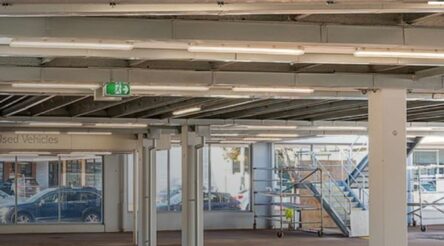CSIRO-led team claims printed solar cell record

CSIRO scientists have led an international team that set a new efficiency record for fully roll-to-roll printed solar cells.
In a statement on Wednesday, CSIRO said the breakthrough result for flexible perovskite cells was published in Nature Communications (linked) and was achieved by a team including members from University of Cambridge, Monash University, the University of Sydney and the University of New South Wales.
According to the paper, the cells achieved “power conversion efficiencies of up to 15.5% for individual small-area cells and 11.0% for serially-interconnected cells”.
Dr Anthony Chesman (pictured) – whose team had its flexible perovskite solar cells launched aboard a Space Machines Company satellite last week – said over a decade of R&D was behind the result.
“CSIRO’s thin and light-weight solar cells are now on the cusp of emerging from the lab to create clean energy in the real world,” said Chesman in a statement on Wednesday.
“Roll-to-roll printing allows for the solar cells to be manufactured on very long, continuous rolls of plastic, which can dramatically increase the rate of production.
“As these methods are already widely used in the printing industry, this makes their production more accessible for Australian manufacturers.
“The successful commercialisation of printed flexible solar cells has the potential to create significant economic and environmental benefits for Australia and the world.”
Dr Doojin Vak, a CSIRO Principal Research Scientist, added that an automated system produced a comprehensive dataset that will pave the way for machine learning to be used in further research.
“We developed a system for rapidly producing and testing over ten thousand solar cells a day – something that would have been impossible to do manually,” said Vak.
“This allowed us to identify the optimal settings for the various parameters in the roll-to-roll process and quickly pinpoint the conditions that deliver the best results,” he said.
Perovskite cells trail silicon cells for efficiency, but can be made at a lower cost without the use of certain expensive ingredients, as well as with physical advantages, such as flexibility, light weight and portability.
CSIRO said it is currently seeking industry partners to commercialise the work.
Picture: supplied
Further reading
Australian team moves perovskite cell development away from alchemy with AI
Australian-made flexible solar cells part of satellite aboard SpaceX mission
Research points way to make solar cells more efficient
@aumanufacturing Sections
Analysis and Commentary Awards Defence Manufacturing News Podcast Technology Videos










